Nilaya, the 46.8-metre panamax yacht under construction by Royal Huisman, has left the halls of Vollenhove and is on its way to Amsterdam for the installation of her towering rig. (Here all our posts about Royal Huisman).
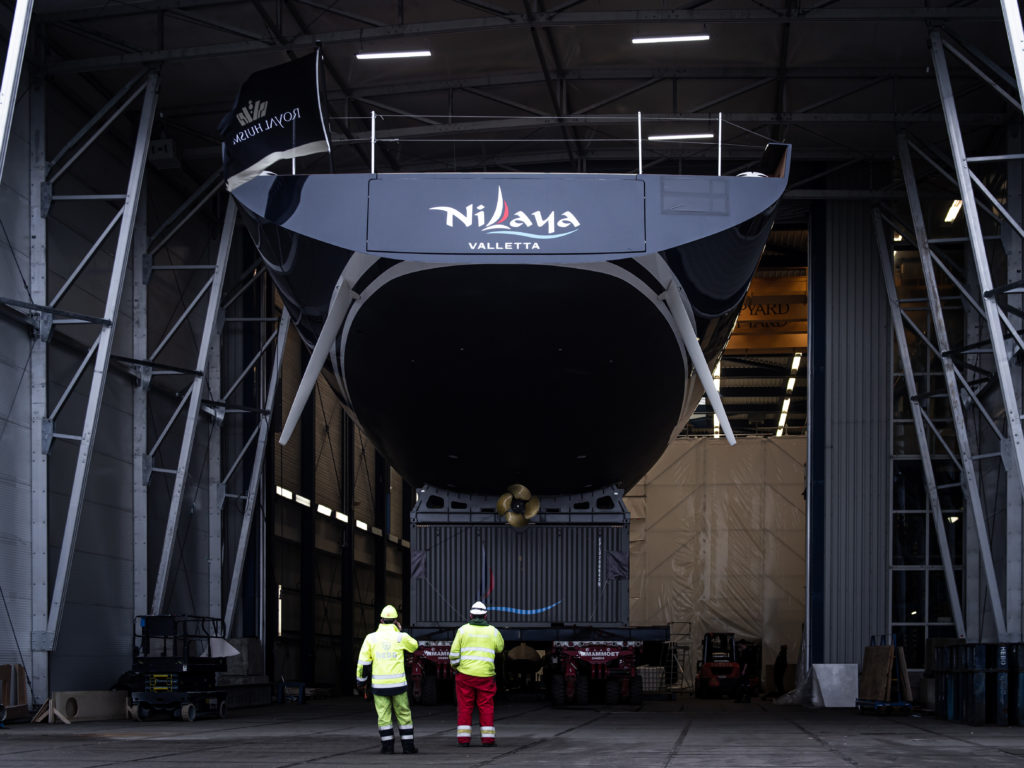
The Featherlight™ revolution
This highly anticipated superyacht is the first to utilize Royal Huisman’s new Featherlight™ design and production method.
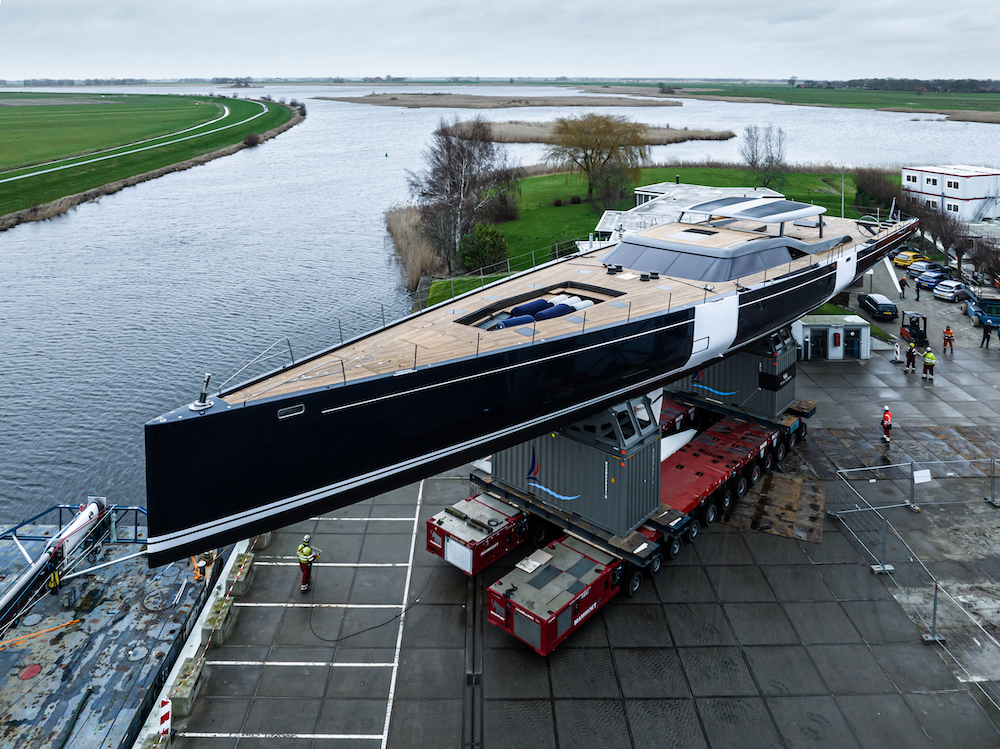
Continuous weight monitoring throughout the build of Project 405 aka Reichel / Pugh – Nauta 154, confirms the Dutch builder has achieved its goal of slicing 11% of the weight of its typical advanced aluminum cruising yachts. Most importantly, it has reduced weight without sacrificing stiffness or cutting corners on quality for this high-performance cruiser.
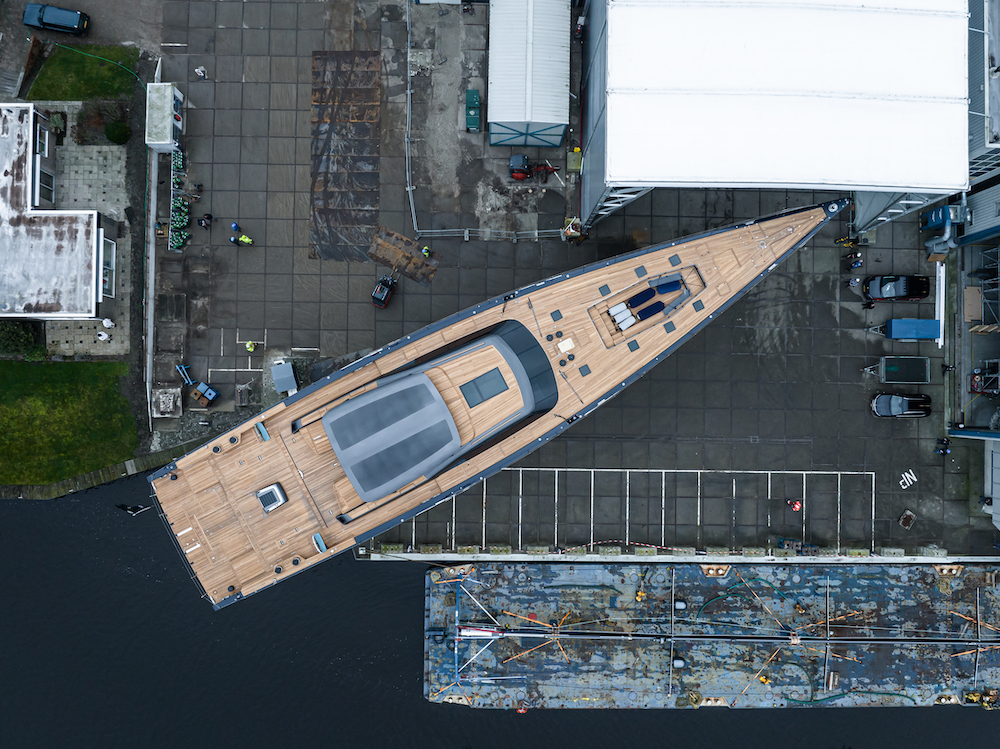
A holistic approach for Nilaya
The shipyard’s revolutionary Featherlight™ method for this 46.8m / 154-foot sailing machine is not a single process or construction technique, but a holistic light weight approach combining various weight-saving solutions.
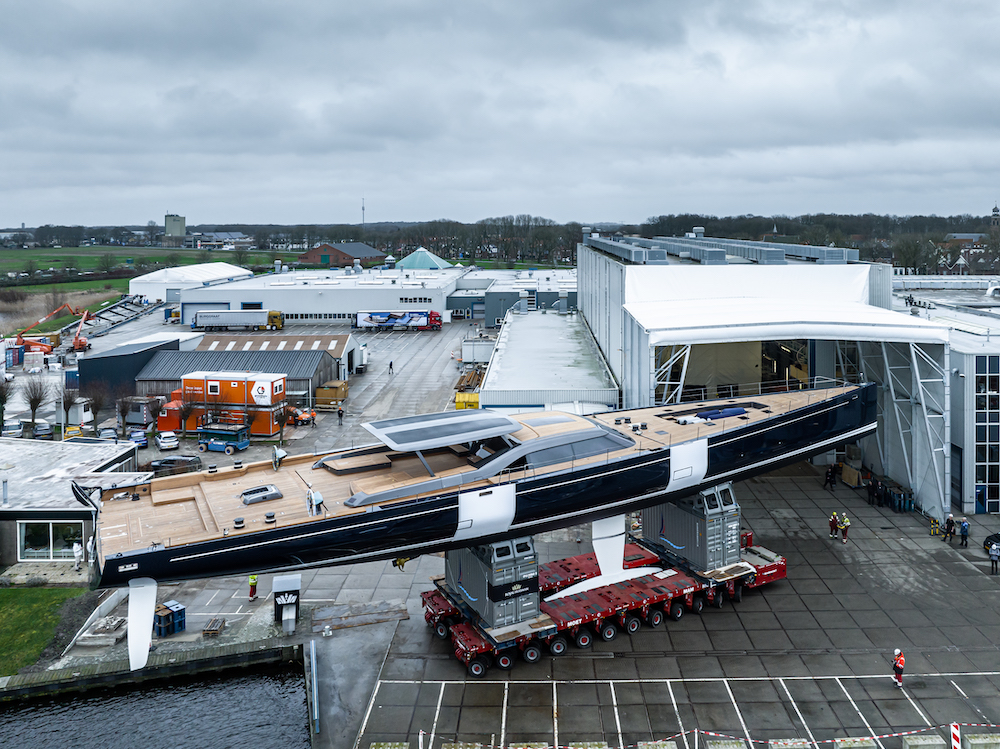
The Featherlight™ process makes use of Finite Element Analysis (FEA), a design methodology rooted in spacecraft technology. FEA modeling enabled selecting various construction materials and varied Alustar aluminum plate thicknesses and frame spacing to maximize hull stiffness while minimizing total displacement.
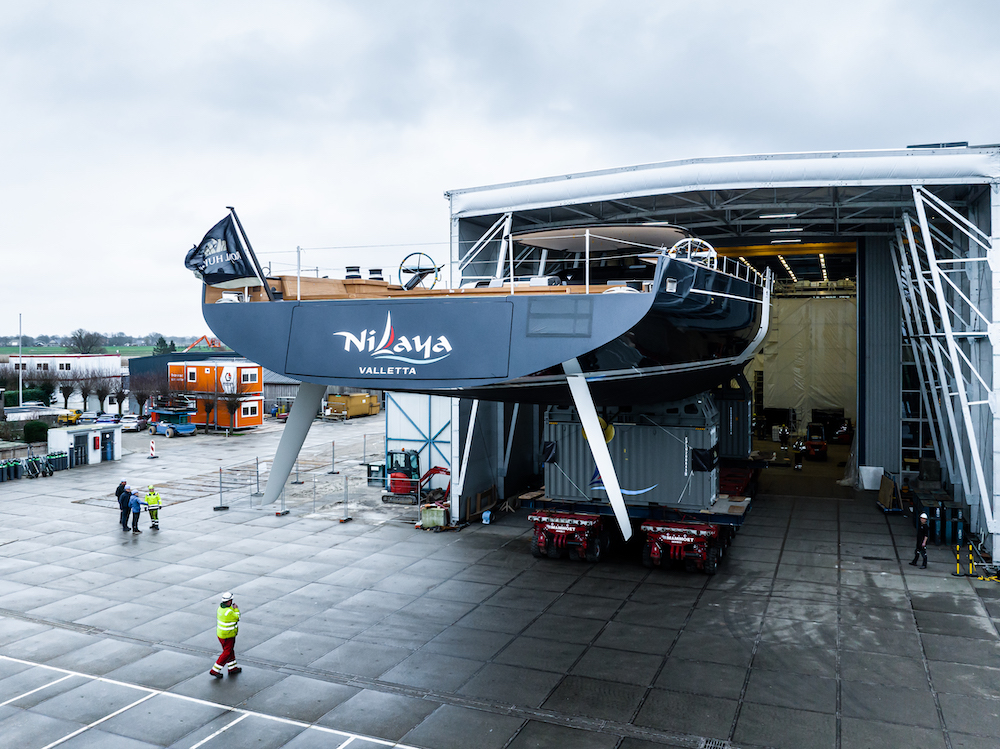
Perfect weight management
With engineering and weight management brought in-house, the approach was comprehensive, extending to lighting, insulation, and all mechanical systems. The interior, too, benefited from careful weight analysis. All interior structural members utilize lightweight foam coring. This innovative approach narrows the displacement gap between aluminum and carbon composite yachts. Comfortable, robust characteristics of an aluminum yacht are now a viable option for owners seeking true sailing performance. Nauta Design’s Mario Pedol noted that the choice of primary hull material did not fundamentally change the yacht’s layout or total weight. “With Reichel / Pugh, we set the target weight. Royal Huisman really embraced the concept. It was a very good process, good collaboration.”
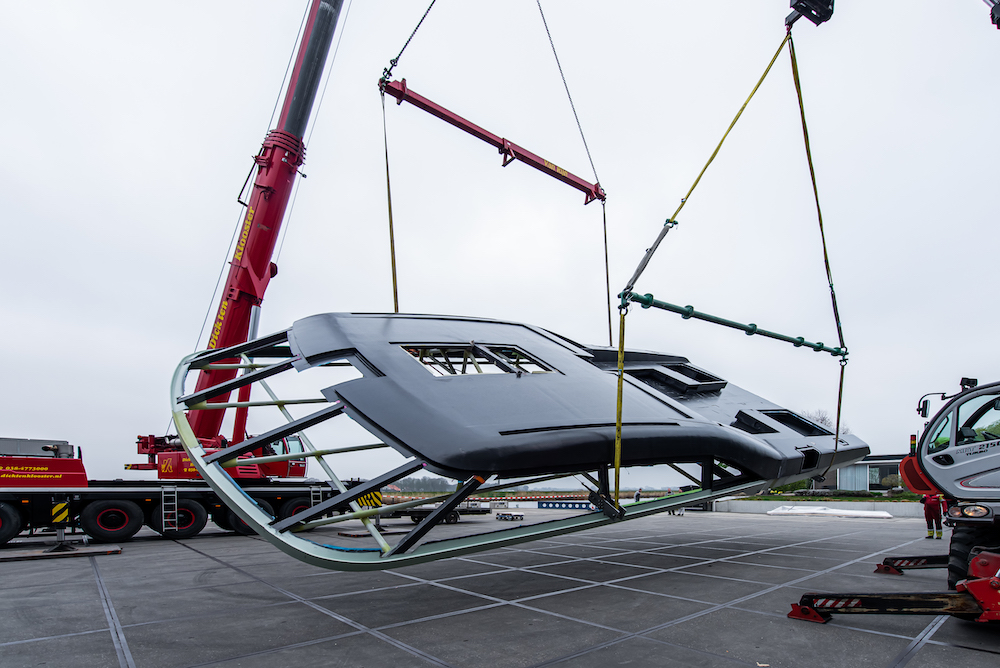
Capturing the carbon fiber expertise of its sister company Rondal, Royal Huisman’s engineering team used this synergy to analyze and predict which structural components would be best made of composites or aluminum. For example, the entire 17.5m / 57-foot curvaceous coachroof and guest cockpit structure are carbon composite. Likewise, the recessed tender well on the foredeck (that transforms to a seating area for cruising or a flush deck for racing) is also carbon composite as are a watertight bulkhead, crew entrance, twin rudders, the keel trunk and a cockpit bimini hardtop.
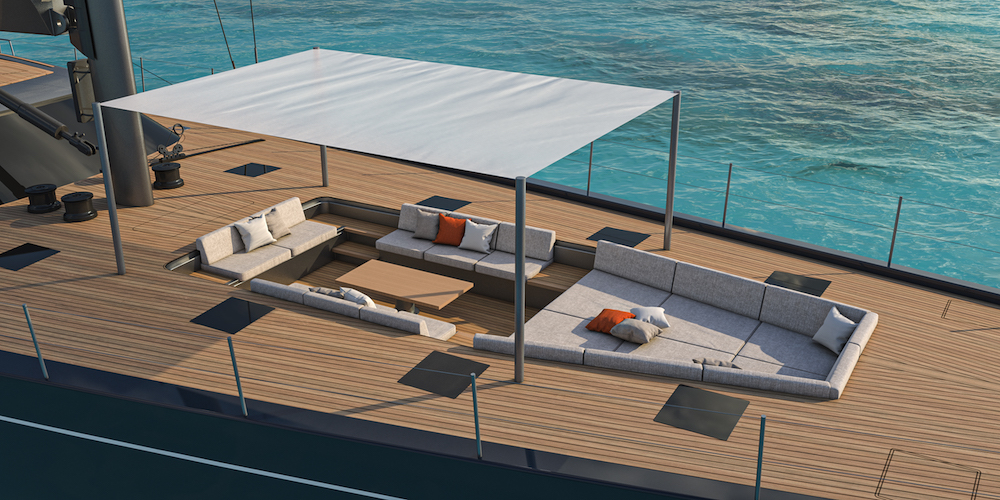
A rig of great balance for Nilaya
For any high-performance cruiser, a carbon fiber mast, boom, and standing rigging are critical to keeping weight as low and as centered as possible for optimal balance. While Rondal has considerable carbon spar expertise, bringing the design of this component — and the sailmaker – into the process during the larger hull design phase is a page out of a maxi-racer’s playbook.
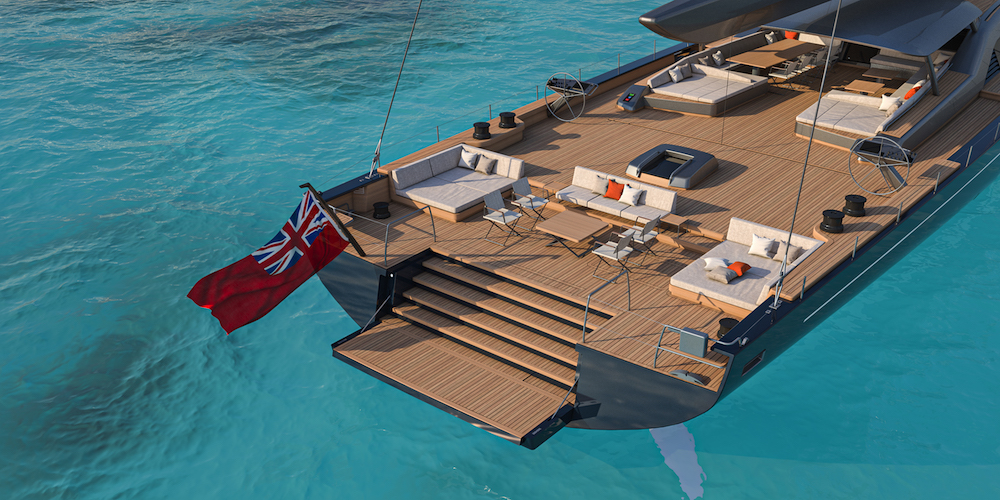
Sails 2.0
Project 405 is also the first yacht of this size range designed to take advantage of structured luff sail design pioneered by Doyle Sails, a choice that allowed the entire Rondal mast, rig, and components to be lighter — a key point considering her Panamax air draft.
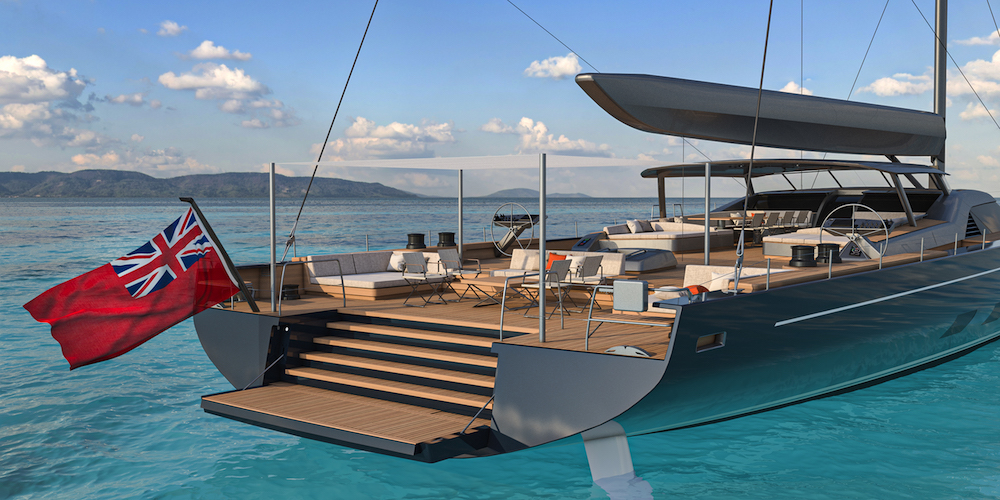
To take advantage of the very narrow headsail sheeting angles possible, Rondal created a radical new curved carbon fiber spreader design that is both shorter and more aerodynamic than anything previously available. Rondal also supplied new generation hybrid (carbon and aluminum) captive winches, hatches and various sail handling gear. Most deck hardware is titanium.
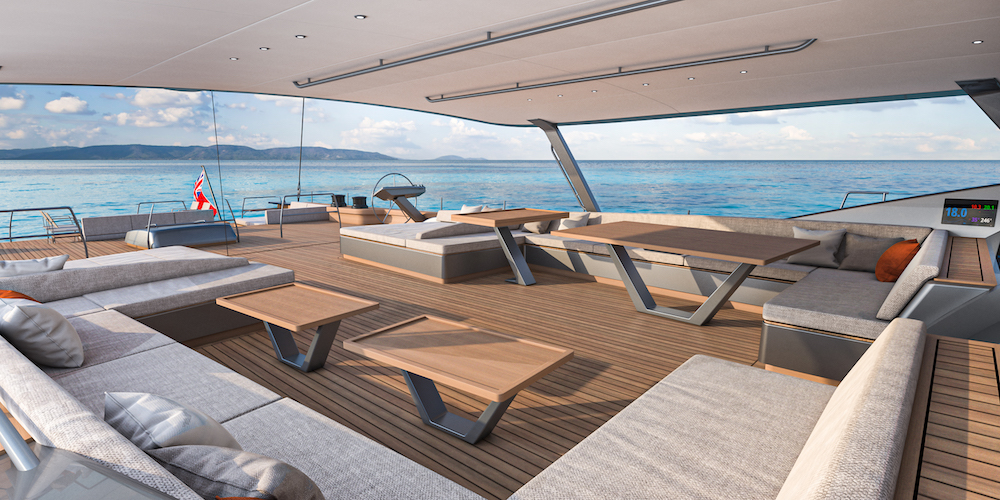
More Reichel/Pug and Nauta once more for the owner of Nilaya
Nilaya’s racy, low profile with its straight bow, wide transom, and twin rudders, echoes the look of her owners’ previous highly successful maxi-racer of the same name. Not surprisingly, she is from the boards of the same naval architecture and design firms, Reichel / Pugh and Nauta, both firms with impressive reputations for high-performance sailing yachts.
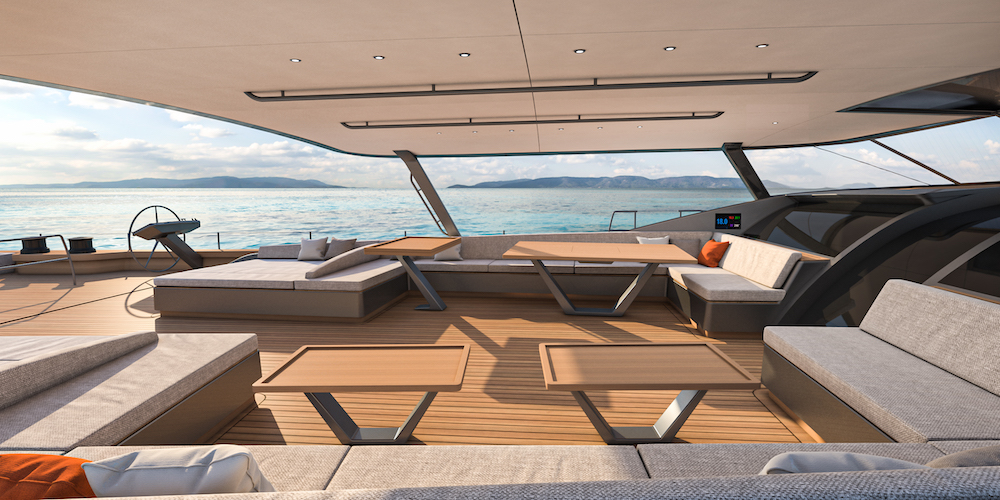
Exploring all the options for a luxurious performance cruiser also capable of podium finishes at superyacht regattas, the team made full design studies for the yacht in both carbon and aluminum using computational fluid dynamics (CFD) to optimize hull shape and balance. Royal Huisman’s Featherlight™ method, an evolution of nearly 60 years of aluminum yacht-building experience melded with the latest carbon technology, provides her owners the best of both materials for a no-compromise yacht.
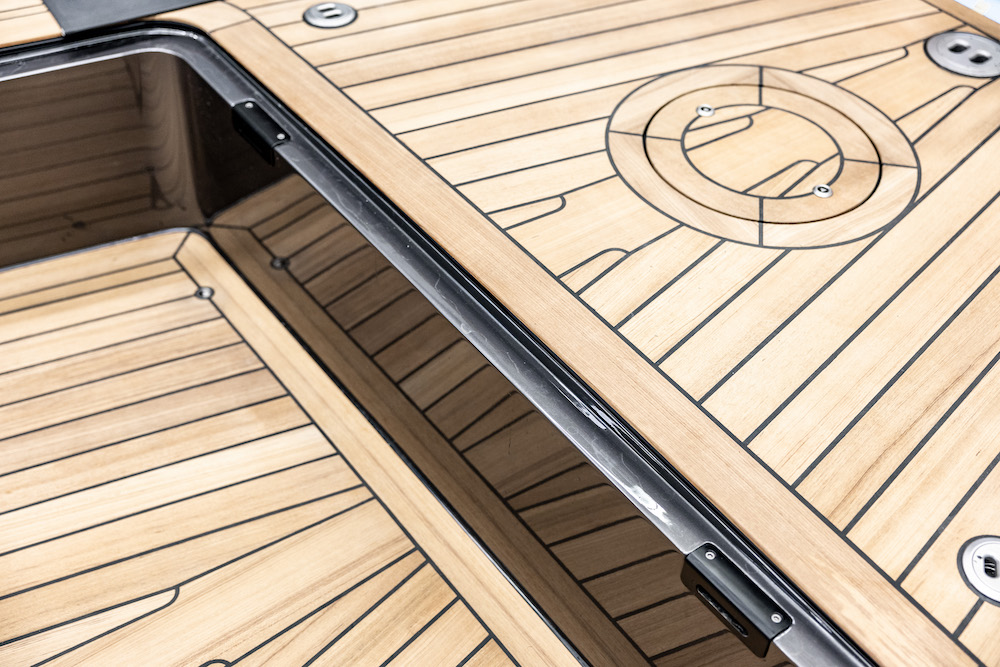
Project 405 Nilaya will be delivered to her owners, represented by Nigel Ingram from MCM Newport, in the coming months.






